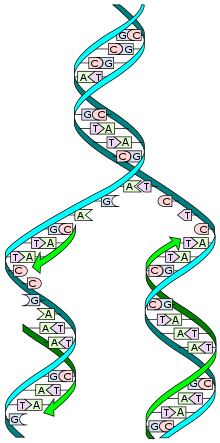Cell-mediated immunity
Cell-mediated immunity is an immune response that does not involve antibodies. Rather, cell-mediated immunity is the activation of phagocytes, antigen-specific cytotoxic T-lymphocytes, and the release of various cytokines in response to antigen. Historically, the immune system was separated into two branches: humoral immunity, for which the protective function of immunization could be found in the humor (cell-free bodily fluid or serum) and cellular immunity, for which the protective function of immunization was associated with cells. CD4 cells or helper T cells provide protection against different pathogens. Naive T cells, which are immature T cells that have yet to encounter an antigen, are converted into activated effector T cells after encountering antigen-presenting cells (APCs). These APCs, such as macrophages, dendritic cells, and B cells in some circumstances, load antigenic peptides onto the MHC of the cell, in turn presenting the peptide to receptors on T cells. The most important of these APCs are highly specialized dendritic cells; conceivably operating solely to ingest and present antigens. [1]
Activated Effector T cells can be placed into three functioning classes, detecting peptide antigens originating from various types of pathogen: The first class being 1) Cytotoxic T cells, which kill infected target cells by apoptosis without using cytokines, 2) TH1 cells, which primarily function to activate macrophages, and 3) TH2 cells, which primarily function to stimulate B cells into producing antibodies.[1]
The innate immune system and the adaptive immune system each comprise both humoral and cell-mediated components.
Cellular immunity protects the body through:
- T-cell mediated immunity or T-cell immunity: activating antigen-specific cytotoxic T cells that are able to induce apoptosis in body cells displaying epitopes of foreign antigen on their surface, such as virus-infected cells, cells with intracellular bacteria, and cancer cells displaying tumor antigens;
- Macrophage and natural killer cell action: enabling the destruction of pathogens via recognition and secretion of cytotoxic granules (for natural killer cells)[2] and phagocytosis (for macrophages)[3]; and
- Stimulating cells to secrete a variety of cytokines that influence the function of other cells involved in adaptive immune responses and innate immune responses.[2][3]
Cell-mediated immunity is directed primarily at microbes that survive in phagocytes and microbes that infect non-phagocytic cells. It is most effective in removing virus-infected cells, but also participates in defending against fungi, protozoans, cancers, and intracellular bacteria. It also plays a major role in transplant rejection.
See also
- Immune system
- Humoral immunity (vs. cell-mediated immunity)
- Immunity
References
- Janeway, Charles; Travers, Paul; Walport, Mark; Shlomchik, Mark (2001). Immunobiology (5th ed.). New York: Garland Science. ISBN 978-0-8153-3642-6. Retrieved 24 January 2017.
- Eissmann, Philipp. "Natural Killer Cells". British Society for Immunology. British Society for Immunology. Retrieved 8 November 2018.
- Saldana, José. "Macrophages". British Society for Immunology. British Society for Immunology. Retrieved 8 November 2018.
- Cell-mediated immunity (Encyclopædia Britannica)
- Chapter 8:T Cell-Mediated Immunity Immunobiology: The Immune System in Health and Disease. 5th edition.
Further reading
- Cell-Mediated Immunity. Murphy
- Cell-mediated immunity: How T cells recognize and respond to foreign antigens
